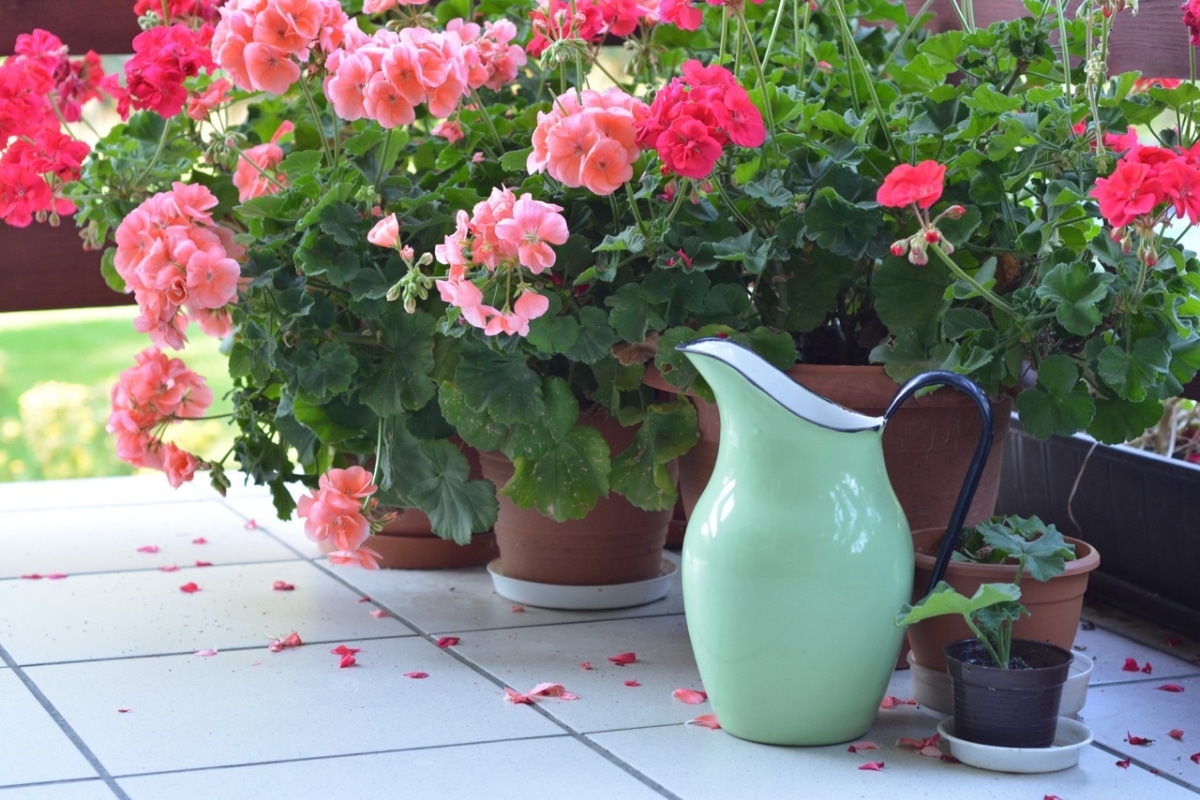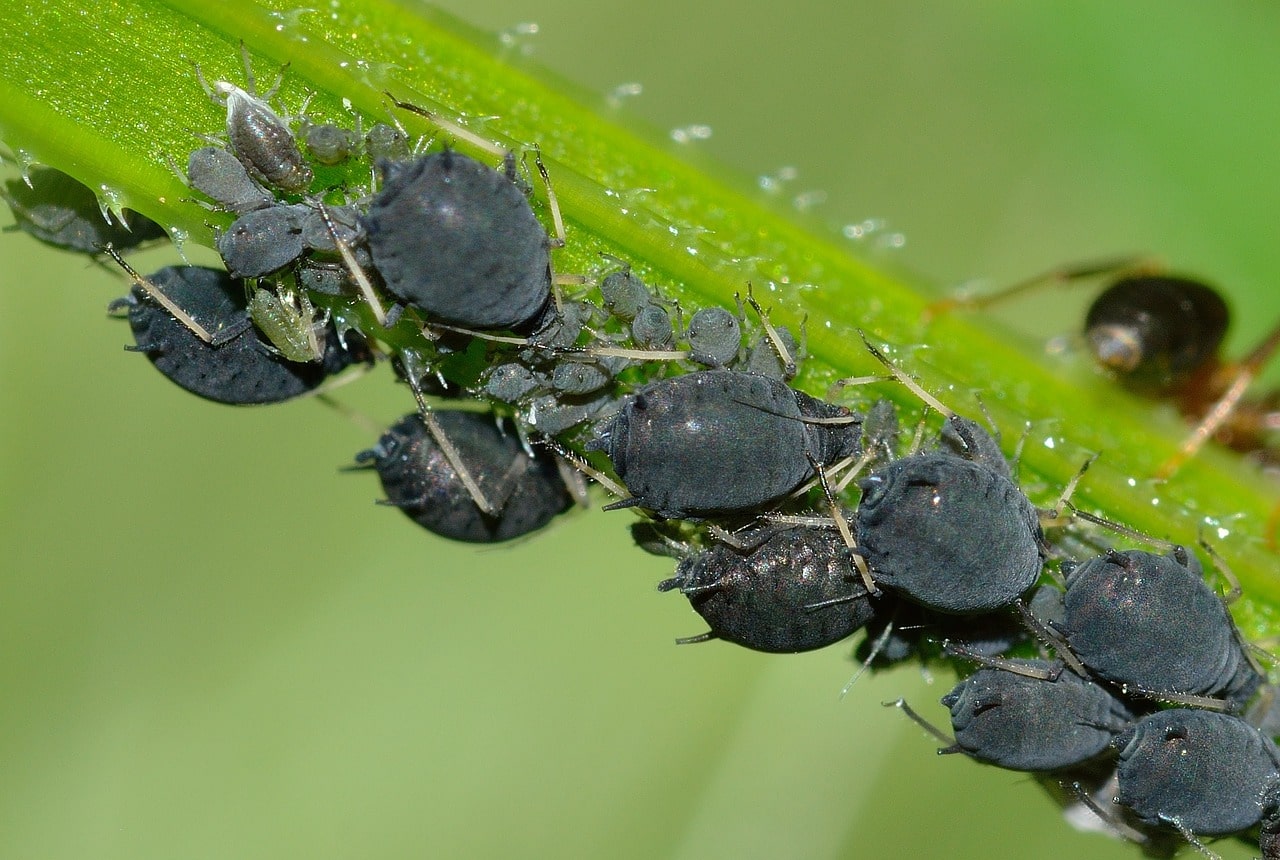
Having geraniums and/or gitanillas on balconies, terraces and/or patios is something very Spanish. One could almost say that we have it in our blood: although it is in Andalusia where they are most cultivated, surely who else who least knows someone who has a specimen in their home. And with a little care they are beautiful. But do you know how they differ?
Although they are two plants that are very similar, their growth is a little different, which is why they are usually grown in different areas. Therefore, we will tell you below what is the difference between geranium and gitanilla, and what care do they require.
How are geranium and gitanilla different?

As we said at the beginning, its main difference is its growth: the geranium has a more erect bearing, while the gitanillas are hanging, which is why they are usually the favorites to have on balconies.
Another important characteristic that can be seen when the specimens are adults is that geraniums are smaller plants than gitanillas; in fact, while they rarely exceed 50 centimeters in height, gypsy girls can reach 1 meter.
The flowers of one and the other are a little different too: those of geraniums are more rounded, and measure about 2-3 centimeters in diameter. On the other hand, those of the gypsies are more open.
All this means that botanists have given them different names: the most commercialized geraniums belong to the species Pelargonium x hortorum, but the gypsies are called pelargonium peltatum. This is curious, because neither of them are really pure geraniums, since they do not belong to the genus Geranium.
But this has its explanation: Pelargoniums share much of their genetic material with Geraniums., so scientists have classified them within the Geraniaceae family. Now, if you want to know which are the best known Geranium varieties, click here.
How to have beautiful geraniums and gitanillas?
The care of these two plants is not difficult, but it is important to take into account several things that we will now tell you so that there are no problems, and in the process ensure that they remain well, healthy and precious:
Location
Both geraniums and gitanillas they should be placed in a place where there is a lot of light so that they can flourish. In fact, it is best to place them in an area exposed to direct sunlight, as this ensures that they will grow correctly and that their flowers will develop normally. At a minimum, they should receive 4 hours of direct light per day.
In the event that frost is recorded in winter, it is best to protect them at home, taking them to a room where there is a lot of light and where they are far from the heating and any other device that generates drafts.
Soil or substrate
These plants fear excess water in their roots, so the most advisable thing is to plant them in light soils that drain water well, like those of the brands Flower o BioBizz for example.
If you are going to have them in the garden, it is important that you make sure beforehand that the soil has good drainage, otherwise you will have to make a deep hole, at least 50 x 50 centimeters, and fill it with a mixture of peat and perlite. in equal parts.
Irrigation

How to water geraniums and gitanillas? They are not plants that resist drought, so we have to be careful with watering, and not let the soil remain dry for too long. Thus, during the summer it will be important to water several times a week, especially if they are outside, but in winter we will water less since otherwise we would risk the roots rotting.
Now, in case of doubts, the best we can do is check the humidity of the soil, for example by inserting a wooden stick: if when you take it out it comes out practically clean, then the soil is dry.
Another trick to know if it is time to water is to take the pot as soon as we have watered, and again after a while: first we will notice that it is heavy, but after a few days the substrate will be dry and will weigh little.
Subscriber
Both the geraniums and the gitanillas appreciate being paid throughout the growing and flowering season, i.e. from spring to autumn. For this reason, we recommend applying a liquid fertilizer for flowering plants, or a specific one for geraniums (you can get it here), following the instructions for use.
Geranium Fly Prevention

The geranium fly or drill is the most feared pest that our beloved plants can have. So, before the symptoms appear (hollow stems, worms in the leaves, dry leaves) we have to apply a specific insecticide, like this one you will find . As it is a spray, you simply have to spray the product all over the plant: both sides of the leaves, flowers, stems and the substrate, once every 15 days during spring and summer.
If the symptoms have already appeared, it will also help you eliminate this plague.
We hope this article has been useful for you.